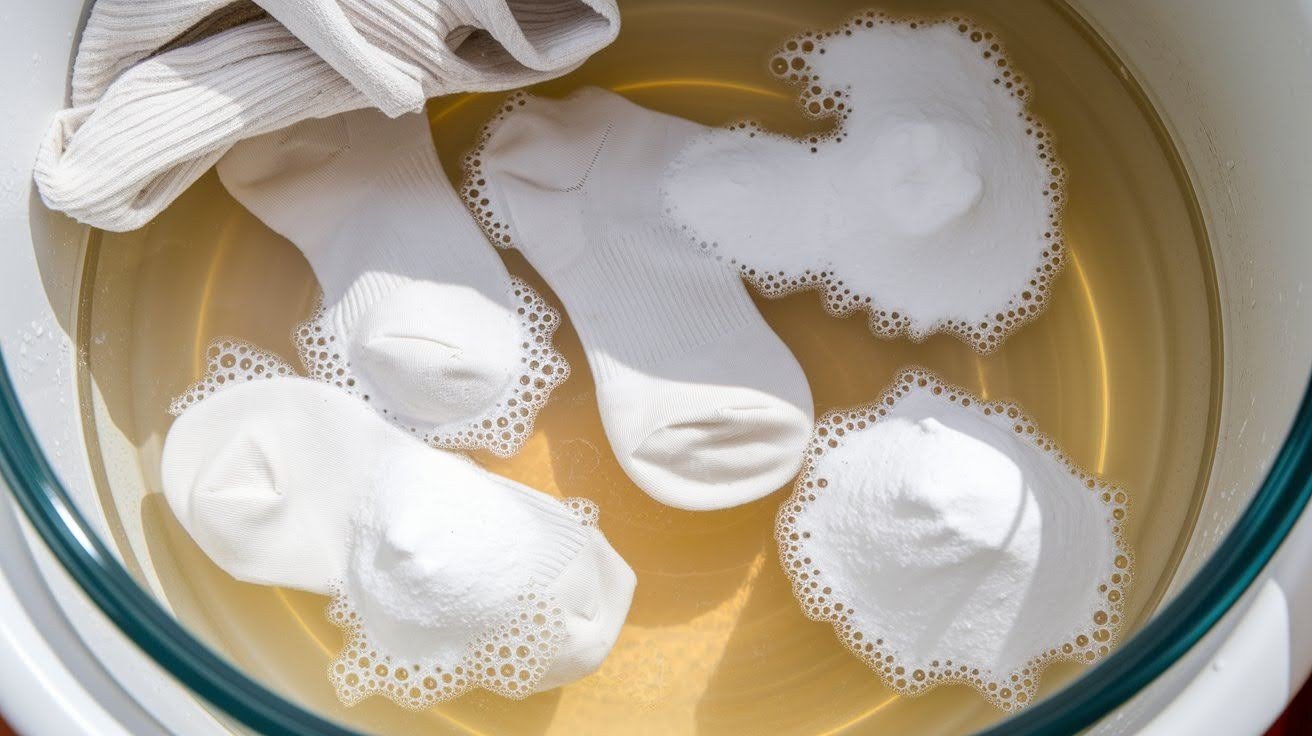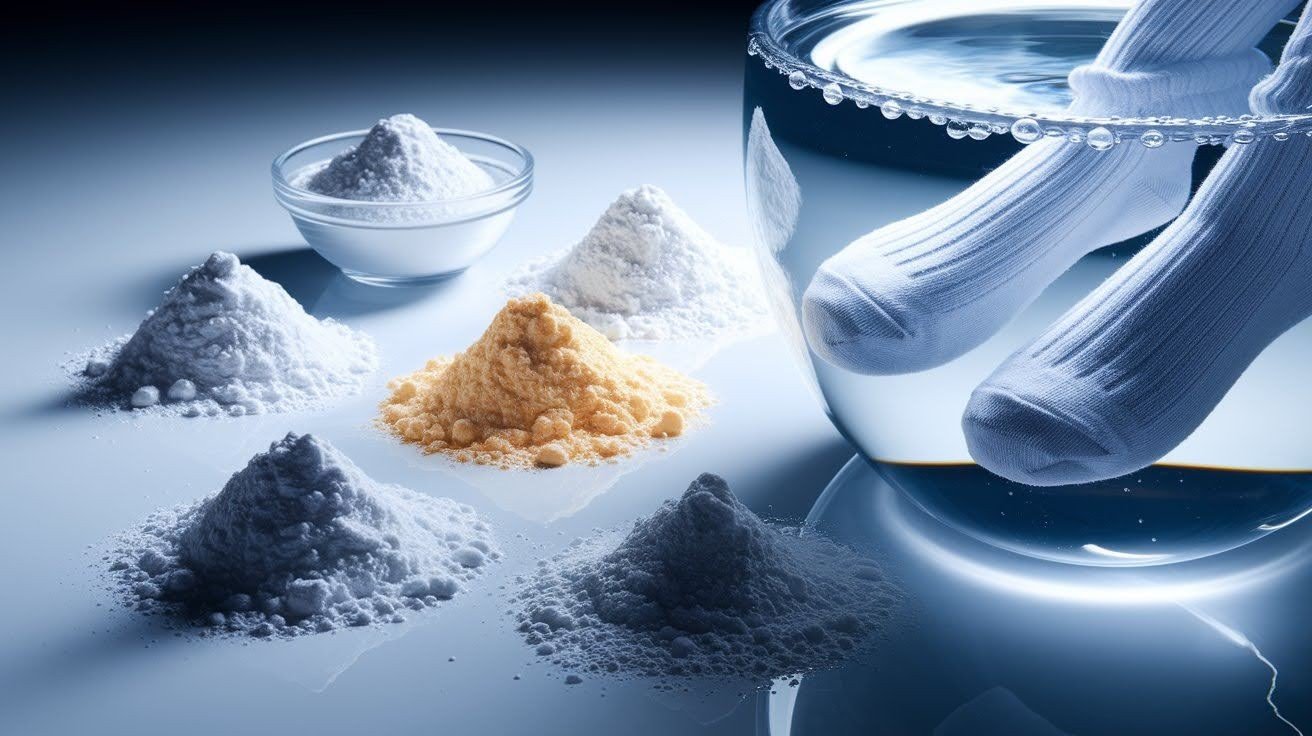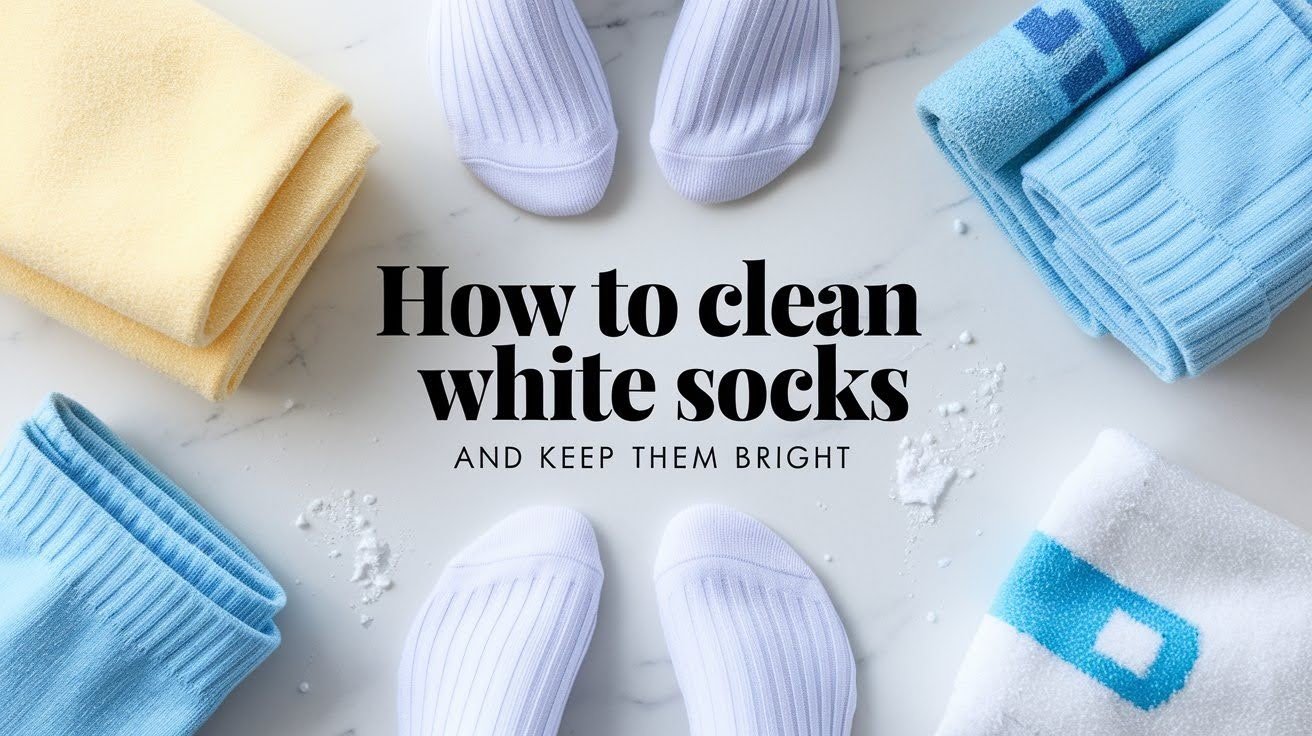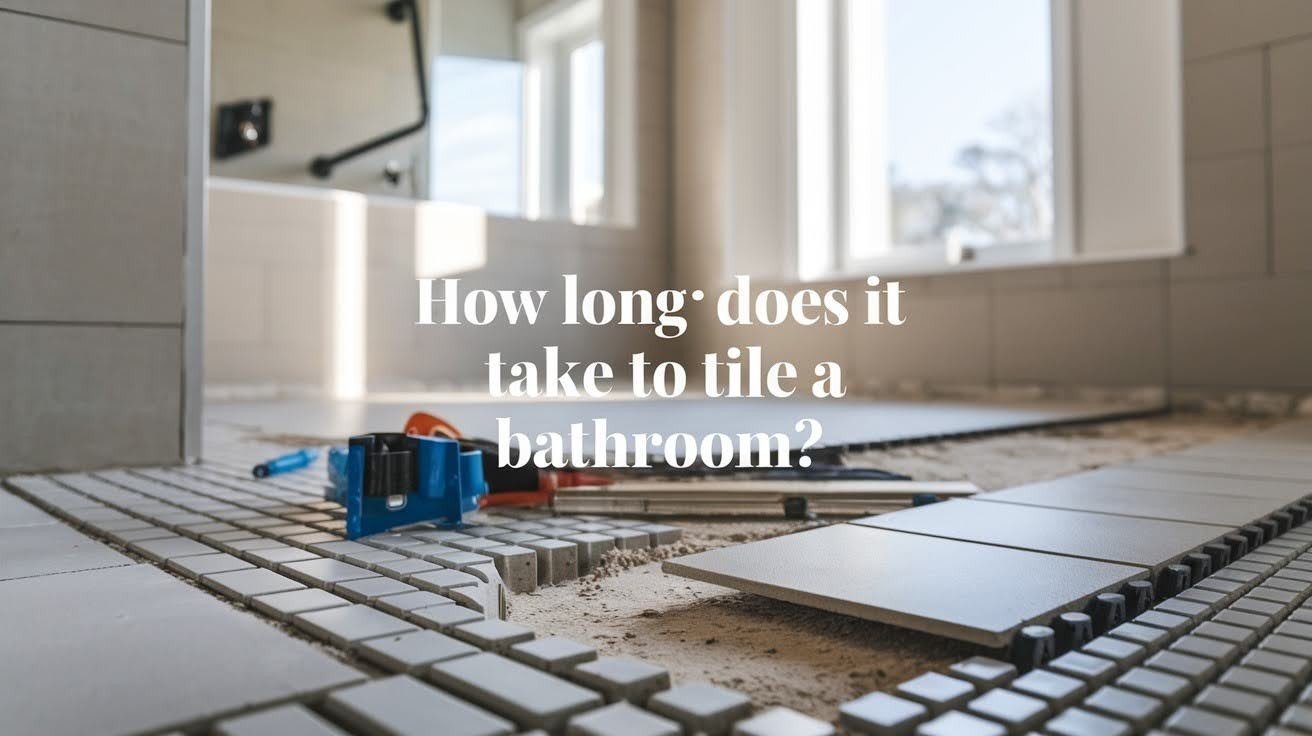Most people have gray or dingy white socks in their drawer that used to be bright white.
White socks lose brightness over time through normal wear. Dirt, sweat, and oils build up in fabric fibers. Regular washing often can’t restore their original color.
After years of laundry experience and testing different methods, I’ve found simple techniques using household items that really work. I used to throw away perfectly good socks before learning these restoration methods.
This guide shows you how to clean white socks using common items you likely have at home. No expensive products or special equipment needed.
Quick Methods to Get White Socks Clean Again
The fastest way to learn how to clean white socks is to start with methods that work right away. These two techniques use simple ingredients and give you results you can see.
The Hot Water Soak Method

This method works well because hot water opens up the fabric fibers. The acid from vinegar or lemon juice breaks down the buildup that makes socks look gray.
Fill a large pot with one gallon of hot water. Add half a cup of white vinegar or half a cup of fresh lemon juice. Then add one to two tablespoons of heavy-duty laundry soap.
Put your socks in this mixture and let them soak for at least four hours. Overnight soaking works even better for really dirty socks. After soaking, wash the socks normally using hot water in your washing machine.
Baking Soda Treatment

Baking soda is a natural cleaner that lifts stains and odors from fabric. It works by changing the pH level, which helps break down dirt and oils.
Create a warm water bath in your sink or a large bowl. Add a generous amount of baking soda – about half a cup for every gallon of water. Let your socks soak for several hours in this mixture.
When you’re ready to wash them, add 150 to 200 milliliters of baking soda to your washing machine’s detergent drawer. Then wash the socks as you normally would with hot water.
Best Practices for White Sock Care
Taking care of your white socks the right way can prevent them from getting dingy in the first place. These simple habits will keep your socks looking newer for longer.
Here are the most important things to remember when learning how to clean white socks:
- Wash white socks separately from colored items
- Use hot water instead of cold for heavy soil removal
- Don’t leave socks inside out while washing
- Avoid mixing heavily soiled socks with lightly soiled white socks
- Use heavy-duty detergent with enzymes
- Wash socks after every use
Following these steps will help your white socks stay whiter between deep cleaning sessions. The key is to treat stains and dirt before they have time to set into the fabric.
Additional Cleaning Solutions That Work
Sometimes basic methods aren’t enough for really stubborn stains. These stronger techniques can handle socks that have been neglected for a long time.
Bleach and Other Whitening Products

Chemical whiteners can restore even the most dingy socks when used correctly. Each type works differently, so it’s important to measure carefully and follow safety rules.
For chlorine bleach, use one-fourth cup per gallon of water. Oxygen-based bleach powder needs two to three tablespoons per gallon. Hydrogen peroxide works well at one cup per gallon of water.
Laundry borax is another option – use one cup per gallon of water. Always read the labels on your socks before using strong chemicals, as some materials can be damaged by bleach.
Never mix different cleaning products, as this can create dangerous gas. Stick to one product at a time when learning how to clean white socks with chemicals.
When to Replace vs. Clean Your White Socks?
Sometimes socks are beyond saving, no matter how hard you try. Knowing when to give up can save you time and effort.
Look for holes, thin spots, or areas where the fabric is breaking down. If the elastic in the top is completely stretched out, replacement is probably the better choice. Socks that have been stained with permanent substances like paint or ink may not respond to cleaning.
Compare the cost of your time to the price of new socks. If you’ve tried multiple methods without success, buying new ones might make more sense. Quality socks last longer and often look better after cleaning than cheap ones.
Build better sock rotation habits by having enough pairs so you don’t wear the same ones too often. This reduces wear and makes cleaning more effective when you do need to restore whiteness.
Common Mistakes to Avoid
Even when you know the right methods, certain mistakes can make your efforts less effective. Avoiding these problems will help you get better results.
Here are the biggest mistakes people make when trying to restore their white socks:
- Overloading the washer so socks don’t have room to move
- Using cold water for heavily soiled socks
- Mixing different cleaning products
- Skipping the presoak step for very dirty socks
- Using too much or too little detergent
Learning how to clean white socks means understanding what doesn’t work as well as what does. These mistakes can waste your time and may even damage your socks.
Conclusion
Learning how to clean white socks doesn’t have to be complicated. The hot water soak method and baking soda treatment work well for most situations. For tougher stains, try the boiling method or chemical whiteners.
Prevention through proper care makes the biggest difference. Wash white socks separately, use hot water, and don’t let stains sit too long. These simple habits keep socks looking good longer.
Most dingy white socks can be restored with patience and the right method. Don’t throw away socks until you’ve tried at least two different cleaning techniques.
Try one of these methods this week on your dingiest pair of white socks. You’ll probably be happy with the results and wish you’d tried it sooner.
Frequently Asked Questions
Why Do My White Socks Stay Dirty After Regular Washing?
Water temperature might be too low, the detergent amount incorrect, or fabric softener buildup prevents cleaning. Try hot water, proper detergent measurement, and skip fabric softener.
Can I Use Bleach on All Types of White Socks?
Check sock labels first – cotton handles bleach well, but polyester blends may yellow. Wool and delicate materials need gentler methods like vinegar or lemon juice.
How Often Should I Deep Clean My White Socks?
Deep clean monthly or when socks look gray after regular washing. Prevention through proper washing reduces the need for frequent deep cleaning treatments.
What Temperature Water Works Best for White Socks?
Hot water removes soil best for cotton socks. Check care labels for synthetic materials – some need warm water. Cold water doesn’t clean heavy soil effectively.
Are Natural Methods as Good as Chemical Whiteners?
Natural methods like vinegar and baking soda work well for light staining. Bleach handles tough stains better, but can damage some fabrics. Combine methods safely for best results.






